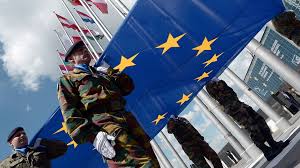
Trump Demands End to Gaza Ceasefire if All Israeli Hostages Are Not Freed
President Donald Trump’s call to “cancel the ceasefire” in Gaza unless all remaining Israeli hostages are freed has sparked a new wave of diplomatic tension in an already volatile Middle Eastern landscape. In remarks delivered from the Oval Office, President Trump warned that if Hamas did not release every hostage by midday Saturday, he would consider the existing truce null and void, urging Israel to let “all hell break out.”
His comments come amid a fragile pause in hostilities that began on 19 January, following months of bloodshed that has gripped the region since Hamas’s initial attack on Israel on 7 October 2023. The abduction of Israeli civilians and soldiers—251 hostages taken, according to official Israeli government figures—triggered a severe escalation in the conflict, leading to international outcry and attempts by mediators to broker a temporary halt to the fighting.
In the unfolding drama, multiple stakeholders—Israel, Hamas, the United Nations (UN), neighbouring Arab states, and global powers—are wrestling with the stark choices between continuing the ceasefire or plunging back into open warfare. This article examines the build-up to President Trump’s remarks, the various perspectives on the ground, and what the stakes are for the region if hostilities are renewed.
Context: The Conflict in Gaza
1. Hamas’s Attack on 7 October 2023
○ According to the Israel Defence Forces (IDF) and corroborated by BBC News, Hamas launched a series of coordinated attacks on Israeli territory, killing hundreds and taking 251 hostages, including civilians and soldiers.
○ The Israeli government declared a state of emergency, labelling the abductions a “crime against humanity,” setting the stage for Israel’s subsequent military offensive in Gaza.
2. Humanitarian Crisis
○ The fighting, bombing, and siege-like conditions in Gaza have led to severe shortages of food, water, and medical supplies. According to the United Nations Office for the Coordination of Humanitarian Affairs (OCHA), the intensification of military operations has displaced more than a million people within the Gaza Strip.
○ Winter storms in the region have worsened living conditions for internally displaced families, forcing many to seek temporary shelter in schools, mosques, or the houses of relatives.
3. Fragile Ceasefire
○ Under pressure from global leaders and backed by mediation efforts involving neighbouring Egypt and Qatar, a ceasefire was introduced on 19 January. This “pause” has been characterised by sporadic violations, accusations, and delays in hostage releases.
Trump’s Stance: A Call to End the Ceasefire
President Trump’s statement added significant uncertainty to a crisis that was already delicately poised. Speaking to reporters in the Oval Office, he set a firm deadline:
“If all of the hostages aren’t returned by Saturday at noon, I think it’s an appropriate time… let hell break out.”
1. Immediate Deadline
○ President Trump insisted that the releases should not occur in “drips and drabs,” explicitly demanding all remaining hostages be freed collectively.
2. Wider Threat
○ His statement was accompanied by a veiled warning, suggesting a willingness to support a full-scale Israeli re-engagement in Gaza—should the deadline not be met.
3. Potential Implications
○ Diplomats caution that such a stance may undermine ongoing mediation. If the ceasefire collapses, civilian casualties could escalate dramatically, and the humanitarian catastrophe could become significantly worse.
Responses and Reactions
● UN Secretary-General António Guterres appealed for caution, warning, “We must avoid at all cost the resumption of hostilities in Gaza; that would lead to an immediate tragedy.”
● Guterres called on Hamas to continue releasing hostages as per the original ceasefire agreement, stressing that renewed combat would severely set back any humanitarian progress.
● While Israeli officials have not officially endorsed President Trump’s ultimatum, there is mounting pressure within Israel to ensure all hostages are returned.
● A meeting of the Israeli Security Cabinet, already scheduled to discuss the next steps, takes on new urgency. In the streets around the Cabinet’s meeting venue, families of hostages have staged protests, demanding the government keep diplomatic options open as long as hostages’ lives remain at stake.
● The Palestinian militant group Hamas announced a delay in planned hostage releases, accusing Israel of violating parts of the ceasefire agreement, particularly concerning humanitarian aid corridors and safe passage for displaced Palestinians returning to their homes.
● In an official statement, Hamas expressed willingness to continue mediated talks but suggested that Israel had been “delaying the return of displaced Palestinians and firing on people,” claims Israel denies.
4. Jordan, Egypt, and Regional Actors
● Following President Trump’s remarks, tensions rose further due to the suggestion that regional neighbours could be pressured into hosting displaced Gazans.
● Jordan, home to over two million Palestinian refugees, vehemently opposes any large-scale new influx. King Abdullah II is in Washington for discussions, facing both the potential leverage of substantial US aid to Jordan and popular discontent at home against permanent resettlements of Palestinians.
● Egypt, similarly, has expressed reluctance to open its borders for mass relocation, citing security concerns and existing economic pressures.
The Hostage Crisis: Data and Timeline
1. Initial Number of Hostages
○ In the aftermath of the 7 October attacks, Israeli governmentsources confirm that 251 individuals were abducted and taken into Gaza.
2. Current Figures
○ Over recent weeks, partial deals within the ceasefire framework have facilitated the release of 16 Israeli hostages.
○ By the end of the first stage of the truce, a further 33 hostages were scheduled for release, although Israeli authorities state that they have evidence suggesting eight of those 33 may already be deceased.
○ That leaves approximately 73 still believed to be held by Hamas, though exact numbers remain disputed due to ongoing intelligence challenges and limited access to verify conditions inside Gaza.
3. Ceasefire Accords and Expected Releases
○ The initial agreement brokered through mediators like Qatar and Egypt emphasised a step-by-step release process, reciprocated by short-term extensions of the ceasefire.
○ Hamas’s halt to the planned release has prompted renewed tension and cast doubt over the possibility of continuing or extending the truce.
Pressure on Jordan and Egypt
President Trump’s broader strategy in the region seems to hinge not only on threatening a return to conflict but also on the potential relocation of Gaza’s civilian population. He has repeatedly mentioned the possibility of withholding US aid from Jordan (estimated at more than USD 1.5 billion per year, according to the US State Department) and Egypt if they refuse to accept Palestinian refugees.
1. Jordan’s Stance
○ Jordan’s leadership and citizenry are largely united in rejecting this plan. King Abdullah II, speaking informally to journalists, argued that Jordan could not absorb further displacement without jeopardising its stability.
○ Public sentiment, captured in numerous protests, views any forced displacement from Gaza as tantamount to an annexation of Palestinian land by Israel’s far-right factions.
2. Egypt’s Position
○ President Abdel Fattah el-Sisi has reiterated that Egypt’s border with Gaza, the Rafah crossing, should remain open to humanitarian aid but closed to large-scale population transfers.
○ Cairo’s primary concern remains the spillover of conflict and the potential strengthening of militant groups within its borders.
3. Strategic Importance
○ Both Jordan and Egypt have longstanding peace treaties with Israel and receive significant military and economic support from the United States. Any strain in their relationships with Washington could have a knock-on effect across the Middle East.
Implications for Regional Stability
1. Risk of Renewed Fighting
○ If President Trump’s ultimatum leads Israel to abandon the ceasefire, the conflict will almost certainly escalate. Military analysts warn that renewed fighting could further destabilise the region, drawing in more actors and heightening tensions.
○ The International Crisis Group notes that a prolonged war in Gaza could intensify cross-border clashes with Lebanon’s Hezbollah or prompt retaliatory attacks in the West Bank.
2. Humanitarian Catastrophe
○ Even during the ceasefire, necessities like electricity, fuel, and medical supplies barely meet demand in Gaza, according to Médecins Sans Frontières (MSF). A new offensive would multiply civilian casualties and displacement.
○ The UN projects that tens of thousands more could be forced to flee their homes within days of renewed conflict, with nowhere safe to go.
3. Diplomatic Fallout
○ The United States’ threat to cut aid to countries unwilling to follow its policy of relocating Gazans is likely to strain relationships in the region.
○ Longstanding alliances, particularly with Jordan, are at risk, which could have ripple effects for other partnerships the US maintains in the Middle East.
Conclusion: A Heartfelt Call for Peace
The stakes in Gaza have never been higher. On the one hand, the release of hostages remains a pressing moral imperative. Families in Israel are desperately hoping for news of their loved ones, while in Gaza, families endure relentless hardships with scant resources, uncertain futures, and the looming threat of a renewed offensive. President Trump’s ultimatum raises the temperature on all sides, threatening to unravel even the fragile progress achieved thus far.
Yet, in these moments of crisis, there is also an opportunity—a chance to avert unspeakable tragedy through serious, sustained negotiations. Diplomats working behind the scenes have proven that limited agreements are possible, evidenced by the recent release of 16 hostages. If more time and diplomacy are given a chance, the region could see a more comprehensive exchange that returns hostages safely and offers a reprieve from further bloodshed for civilians in Gaza.
Human lives—Israeli and Palestinian alike—hang in the balance. The images of children freed from captivity, reunited with tearful parents, evoke universal relief. At the same time, the footage from Gaza, showing families digging through rubble to find loved ones, reveals unspeakable grief. It is precisely this human dimension that demands greater empathy, caution, and a genuine commitment to lasting solutions.
Ultimately, history will judge regional and global leaders by their capacity to balance justice with mercy, security with compassion, and power with restraint. Calls to “let hell break out” may resonate with some looking for swift retribution, but they also carry the risk of sowing deeper hostility and cyclical violence. True leadership looks beyond immediate anger to chart a path of sustainable peace that respects the sanctity of every life on all sides.
In these critical days, amid the swirling uncertainty, a renewed commitment to dialogue could save countless innocent lives. Whether that comes through a continued ceasefire, new negotiations, or an expanded peace framework, the need for dedicated, empathetic, and creative diplomacy has never been clearer. May the region’s leaders and the international community rise to this immense challenge and harness our shared humanity to end a conflict that has brought too much suffering to many people.
Aric Jabari is the Editorial Director of the Sixteenth Council.



